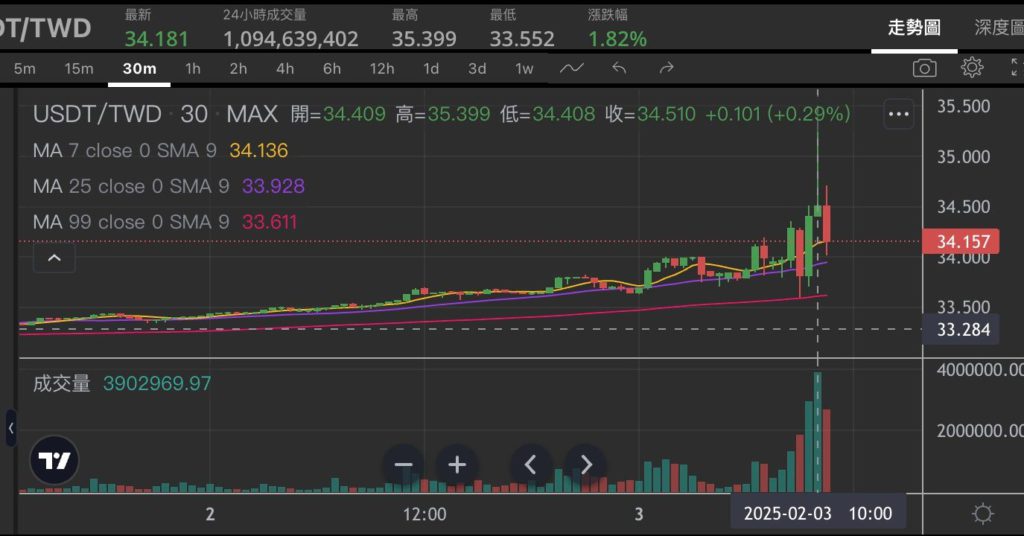US President Trump has ordered a 25% tariff on goods imported from Canada and Mexico and a 10% tariff on Chinese goods, officially sounding the alarm for a global tariff war and shaking the global financial markets. The cryptocurrency market has also seen a panic sell-off, with Bitcoin briefly plunging to $91,231, a new low since January.
Affected by the sharp sell-off, according to Coinglass data, over the past 24 hours, the total amount of cryptocurrency liquidations reached $2.17 billion, with over 710,000 positions liquidated, leaving the market in a state of despair.
USDT briefly surpassed 35 TWD on MAX
It is worth noting that during the sharp decline, the cryptocurrency market has seen a capital flight. At around 10 a.m. this morning, the buy-in price of USDT on the domestic exchange MAX reached a high of 35.399 New Taiwan Dollars.

At the same time, on the Binance and OKX C2C platforms, USDT also saw significant premiums, with the OTC trading price of USDT on OKX reaching around 7.8 yuan, a premium of 6.05%; the OTC trading price of USDT on Binance reached around 7.7 yuan, a premium of 4.7%.

When the market experiences significant volatility or panic, there may be a large number of investors wanting to buy in at the low point, or needing to increase their margin, leading to a rapid increase in demand for USDT, which exceeds supply, causing buyers to be willing to pay a premium above the official exchange rate on the C2C platforms.
Ethereum Gas fees soar
Additionally, during the market crash, Ethereum Gas fees skyrocketed from the original around 13 Gwei to a high of 299.87 Gwei, indicating a sharp increase in Ethereum network transaction demand, as users scramble to secure limited block space, leading to this result.
When market panic spreads, numerous users and bots simultaneously send transactions, competing to have their transactions included in the blocks as soon as possible. The influx of transactions strains network resources, making block space extremely limited, requiring each transaction to pay a higher fee to stand out from the competition, further driving up Gas fees.








